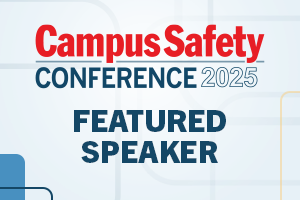The following recommendations outline the foundational school security elements that every K-12 campus should embrace, as well as the research supporting them.
1. Ensure You Can Secure Your School, Including Classroom Doors and Perimeters
As asserted in The Sandy Hook Advisory Commission Report, properly secured classroom doors have repeatedly proven to be an effective response in school shootings. Classroom doors should be lockable (without a key) from the inside the classroom. Metal framed, solid core, fire-rated doors are preferred. Building perimeter doors should be secured with visitor access through a monitored entrance. Campus perimeters should be fenced, secured and supervised while students are present. Access to remote instructional spaces should be within secured routes.

Article author Guy Bliesner will be presenting “Castles, Not Prisons — Crucial Context for K-12 School Climate & Culture in School Security Strategy” at this summer’s Campus Safety Conference being held in Austin, Texas, July 21-23. For more information and to register, CLICK HERE.
2. Install and Maintain PAs, Intercoms, 2-way Radios and Other Emergency Communications Technologies
Effective communication is a requirement for school operations. All schools should have a public address system audible in all interior and exterior occupied areas. The ability to initiate campus-wide notification from multiple locations throughout the building is preferred. Schools need an intercom system with two-way capability in all instructional spaces. A one-to-many radio system for all key personnel is also critical for response. While cell phones are convenient, the limitations of the cellular technology make them ineffective in dynamic situations.
3. Adopt a Common Classroom Response Protocol
Simple, predictable and trainable classroom actions are the core of an effective school response plan. Complex responses at the classroom level are difficult to train and sustain with staff turnover, student mobility and rotating substitute teachers. A training program limited to essential responses will be much more effective in an emergency. It will also be easier to coordinate with response agencies. The Idaho Office of School Safety and Security (IOSSS) recommends a platform called the Four Command Responses: Evacuation, Reverse Evacuation, Hall Check and Lock Down.
4. Embrace Behavioral Threat Assessment and Management
The Secret Service’s Enhancing School Safety Using a Threat Assessment Model report notes that effective behavioral threat assessment and management processes are a key factor in interdicting potential school shooters. Research confirms that the overwhelming majority of school shooters are students. School personnel are uniquely positioned to observe and report pre-attack behaviors once given appropriate training. The current standard of care includes research-based investigation, analysis and management by a well-trained, multidisciplinary team.
Creating securable space and assuring effective communications will likely require infrastructure improvements or modification. These vulnerabilities lend themselves well to one-time use monies and if necessary, a phased implementation. However, also be sure to plan for system and structural maintenance so that your solutions will continue to operate reliably.
Classroom response and behavioral threat management are primarily operational modifications and must be addressed through establishing clearly articulated objectives, purposeful staff training and implementation with fidelity, as well a plan for sustainability.
A more robust security platform will naturally evolve from these four elemental principles. These core considerations are the basis of a secure school environment. Additionally, once in place, they tend to drive attention to other vulnerabilities. School security improvement is an ongoing process. A strong foundation is not a guarantee of a secure facility, but neglecting the fundamentals is always costly and can be a catastrophic misstep.
Guy Bliesner and Mike Munger are with the Idaho Office of School Safety and Security. This article was originally published in 2018, but the recommendations still apply.
NOTE: The views expressed by guest bloggers and contributors are those of the authors and do not necessarily represent the views of, and should not be attributed to, Campus Safety.













